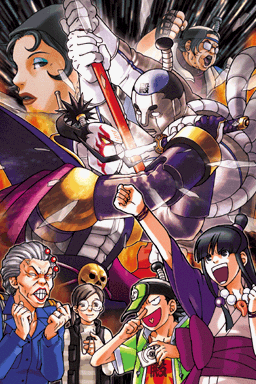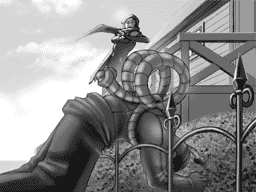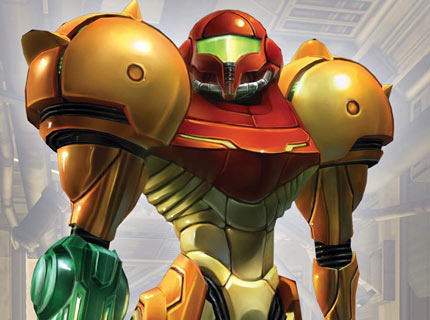Eliss (iOS) – Play Notes
June 17th, 2011
Eliss is an iOS game which involves using the touch screen to break apart, arrange and connect different coloured circles so that they can fit into portals and be removed from play. The goal is to clear a set number of circles from play to advance to the next level. When two different coloured circles touch, a health bar drains. As circles of different size and colours continually spawn, separating the different colours while breaking and connecting other circles becomes more difficult.
Here are some of my play notes:
The more time that has passed in play, the faster the circles spawn. The spawn rate therefore acts as an organic timer as the player can only deal with a certain number of circles before they’re overwhelmed.
Each level has it’s own game idea. For example, breaking circles apart into a multitude of smaller circles and then having to managing the crowd of small circles, working within the tight space limitations of the presence of 2-3 larger circles or acting on your feet to perform quick, simple actions under the pressure of a fast spawn rate. Even though the mechanics only involved joining, breaking and moving the circles, the game design space is very well fleshed out.
Eliss is a very difficulty game. From my own experience—I’m up to level 14 of 25—each level requires a good number of play throughs just to get a general feel for the game idea and develop rough strategies. The demanding difficulty forces players to have a comprehensive understanding of the game idea of each level in order to progress. So, although there are only 25 levels, each level fills an area of the design and for the player to completely finish the game they need to grok that entire design space thoroughly.
This difficulty demands a great deal of concentration and the design of Eliss‘ interface provides no distraction for the player. Here are some neat details in the interface:
- Health bar changes colour depending on the amount of health.
- Portals (circles with nippers), circles (solid fill), spawning circles (outlines), stardust (triangles) are all visually distinct from one another.
- Small squiggly lines in the centre of the circles inform the player that they can be touched and should be touched from the centre point.
- When you touch a circle it buzzes with lines pointed around it to indicate that it’s in play.
- Very little text is used. Pause, continue and exit are represented as icons. The instruction screen uses minimal wording, even numbers are used with level names, eg. “Sector 4teen”
The music and animation work together to provide great feedback to your actions.
The star dust is a great way for players to earn back some health, but at the same time it’s a recipe for risk/reward. Trying not to lose health and keeping the circles from touching and becoming any larger than they need to be creates an impetus for management. Dealing with what can often be a multitude of circles calls for cool-headedness. The random swirl of star dust (which can be touched to redeem health) only last temporarily creates and moves around chaotically throws a spanner into any coolheadedness.
Phoenix Wright: Ace Attorney – System and Limitations
June 10th, 2011
With E3 wrapping up and my holiday over I can slip back into my regular writing schedule. Without further ado…
Game Introduction
http://www.youtube.com/watch?v=detQxA_5BdUPhoenix Wright: Justice for all
Phoenix Wright is a series of puzzle games presented in the form court room dramas staring the titular lawyer as he defends clients in a series of murder cases. Alongside similarly unconventional games like Trauma Centre, Scribblenauts and Professor Layton, Phoenix Wright has come to define the types of alternative game experiences that can be had with the DS hardware.
Unfortunately the series has had a bizarre release schedule in Australia. The first game, Ace Attorney, was released in 2009, 2 years after the second game, Justice for All, made it out here. The 3rd game Trials and Tribulations wasn’t released in Australia, but a PAL version was made for Europe. The later spin-offs Apollo Justice and Miles Edgeworth games were released here within days of their European and American counterparts. Just last year the 3 games in the Phoenix Wright line of the series were ported to WiiWare in Australia. Each game is shipped in very limited numbers. Rarely have I seen any of the games on store shelves. Ironically enough, I’ve actually been playing the recent iOS port of the original game which, confusing release schedules aside, seems to be a good introduction to the series.
Gameplay Overview
Each Phoenix Wright game is organised into 4-5 cases with their own story arcs. Cases begin with a short cinematic that gives a glimpse of the event taking place, usually revealing the perpetrator of the crime. From then Phoenix is drawn into the story and the investigation phase begins. In the investigation phase, the player can go examine the crime scene, pick up clues and talk to people of interest. In this time the player will amount physical evidence as well as pieces of information which are highlighted orange in the text. Physical evidence is stored under the court records, an inventory screen that the player can utilise for further investigation and during court. Pieces of information though aren’t stored anywhere in-game, instead the player must remember and then recall the facts later when needed in court, stressing knowledge skills.
Only once enough evidence is gathered, the court room trial will begin. In the trial the player/Phoenix plays the defence, the prosecution calls people to the stand to give testimonies. Here, the player needs to look for contradictions in the testimonies, object and then present the physical evidence which shows the contradiction. Since breaking the witnesses testimonies uncovers new developments, the investigation and trial phases are usually reopened another 2 times so that the lawyers can further investigate. In each of these instances there are new leads to follow which open up new information and further clarify the events of the murder.
The Roles of Investigation and the Court
The investigation phase is all about building the narrative of events through evidence. It’s actually impossible to fail here as the game won’t progress until the player has found all the clues they need. This is so not as to unfairly disadvantage the player when they’re looking for contradictions in court. As such, the investigation parts of the game lacks the later tension of the court room.
In the courtroom, if the player presents the wrong evidence in objection to a testimony, they will be penalised 1 of 5 free opportunities to make a mistake. With the possibility of failure on the line, breaking testimonies is where Phoenix Wright requires the player to apply the evidence and information from the investigation phase and use their knowledge skills. Because a fail state is present (the only part of the game where this is so), objecting to testimonies is where the core gameplay lies, and thus where we’re going to begin our analysis.
Understanding the Process of Objecting
When the player is picking up clues in the investigation phase, they use these clues to build a narrative in their head. When reading the testimonies in court, the player must actively compare the narrative presented by the witness to the their own narrative based on the proof they’ve gathered. The challenge comes from memorising all the evidence and being able to adapt that knowledge to the situations thrown up in court.
The testimonies are presented in 5 or so sets of grouped sentences that the player can cycle through without the pressure of a time limit. This way the process of identifying contradictions is simplified as the player can only find the contradiction in one of a few defined places.
Sometimes details in the testimonies are vague, so the player can press the witness for clarification. Pressing witnesses doubles the amount of possible information in a testimony, but that extra layer of information can be optionally accessed. This optional layer of depth gives the player more to work which can make finding contradictions easier, but also harder if the witness is unwilling to talk and only presents vague information (making it harder for the player to find where the contradiction lies). Pressing turns finding contradictions into a 2 step process and gives the designers the option to leverage this process to clarify or further muddle a testimony.
Types of Contradictions
Contradictions tend to work on a sliding scale between these two points:
Mistakes
This is when the witness’ account plainly contradicts the evidence. For example, in Day 3 of Episode 2, Witness’s Account, Redd White states that “The victim ran to the left, and you gave chase!” which contradicts May’s testimony that the victim ran to the right. White’s later statement that the victim died from a single blow is also an example of a mistake.
Hypothesis
Sometimes the objections are hypotheses formulated on the evidence (physical and information). For example: in Day 4 of Episode 3, The Day of the Murder, Vasquez claims that she wouldn’t be able to lift the Samurai Spear to kill the victim. Furthermore, the spear itself was broken. So, the player is asked by the judge to suggest how exactly she could have killed the victim. In response the player can present a 5-year old photo which shows another person being impaled on the spikes and the Vasquez looking on in shock. Phoenix then suggests that the same event occurred a second time. At the end of Day 3 of the 4th case, multiple choice questions are thrown at the player where they need to hazard a hypothetical situation based on the information already known.
The Chasm between Process and Mechanics
Now that we understand the process that the player uses to find contradictions and the tools in-game that allow the player to present them to the court, we can explore where exactly the game fails to meet the player.
Presenting Narratives through inventory
For the most part the player will prove their contradictions by presenting an item from the court records to the court. The contradictions are pieces of the narrative that the player has constructed out of the total evidence they’ve gathered. The problem is that a single item of evidence is an inadequate representation for this narrative built on evidence.
The consequences of this disparity between player process and mechanics are two-fold. Maybe you present the correct item, but Phoenix proposes a different theory. In this way it feels like the game is putting words in your mouth. Let’s take a theoretical example. A man is killed while scaling a mountain with his friend, the accused. The evidence is a pair of scissors. Maybe I think that the murderer used scissors to cut the rope which sent the victim falling to his death, so I present the scissors and my choice is correct, but actually Phoenix instead says the victim was stabbed to death on the mountain.
Sometimes it’s the other way around. The player’s narrative is correct, but they present an item that, while involved somehow in the narrative, isn’t what the game wants you to present. For example, on Day 3 of Episode 3 in response to Cody’s Witness Account testimony I presented Cody’s Path to Glory photo album to prove that he it was uncharacteristic of him that he wouldn’t bring his camera with him as often takes photos of the Steel Samurai and puts them in his album. Actually, the game wanted me to present the camera itself because he didn’t have the camera. Sometimes you have the right answer, but you’re not sure which piece of evidence to present.
Potential Contradictions aren’t accepted
Again, this point pertains to what the game is willing to accept and not accept, the game’s logic, so to speak. Because the evidence builds a narrative and within that narrative there is flexibility for the player to construe their own theoretical situations, there are occasions where a perfectly logical contradiction within the framework of evidence can’t be accepted by the game.
This sort of complaint seems to be commonly held against the series. That Phoenix Wright only allows you to follow it’s logic and not your own. Actually, there’s very little that can be done about this from a design standpoint. The only way to fix this issue would be the make the presentation of all evidence prove an acceptable contradiction and even then, there’s good odds that the justification layed down by Phoenix won’t match with the player. In a game where the player is asked to draw pieces together trough pieces of information and inanimate objects, this type of problem arises, you can’t support all possibilities. All that can be done is to choose the right pieces of physical evidence and information evidence to lead the player down the right path, while leaning the gameplay closer towards mistake contradictions and further away from letting the player inventing their own hypotheses.
Metroid Prime – Play Notes Overview #1
June 2nd, 2011
And now a quote from Twitter:
I’m thinking that by E3 I should be able to finish my first play through notes of Metroid Prime. Up to Magmoor Caverns now.
Yeah, I sure do like to dig holes for myself, don’t I?
Truth is I’m finding it much easier and more enjoyable plugging away at my Chinese blog at the moment than continuing on either one of these mammoth projects I’ve burdened myself with. I enjoyed writing up the Wario Land 4 posts, but the thought of whipping everything into perfection is an intimidating task to say the least. I’m thinking that I hold off on that for a little longer. On the other hand, writing about Metroid Prime is a passion project. Even as I take notes I’m so caught up by this game and long to study it further. The problem is I still haven’t found my hook for the project. A complete analysis would be a laborious task indeed and not exactly palatable for a general audience, so I need an engaging format that will hold the information of a text book while being immediately readable.
Format or no format, I need to hone my analysis, so here’s a summary of my key observations so far, from the Pirate Frigate through to Magmoor Caverns.
Foreshadowing
Samus and the player begin their adventure on a Space Pirate frigate. In typical Metroid fashion, you’ve walked into a situation that’s already happened and are left to piece together the remnants. The frigate serves not just as its own segregated tutorial level, but also foreshadows the rest of the game. By being observant from the start, the player is given a gist of what’s to come. Here are some examples:
Space Pirate’s plan – As the player explores the frigate they learn, through scanning the environment, that the space pirates have been using native fauna from the nearby Tallon IV as scientific test subjects for a hazardous substance known as phazon. The results of these experiments are in turn what has caused the disaster to occur and thus bring Samus to the frigate. The data scans reveal that the pirates are present on Tallon IV, continuing their research. Although only partly fleshed out through text and a few images, the outline for most of Metroid Prime’s narrative is established.
Enemies – The laboratories where the pirates have been conducting these experiments also house test-tubed creatures from Tallon IV. The player can walk up to and view models of the creatures who will later act as enemies of Tallon IV. Some of the staple enemies can be scanned as well, but only for temporary data. The lab acts as a sort of museum for pre-viewing. Meta Ridley also makes a presence in a cutscene which leads the player to the inevitable conclusion that they’ll have to once again beat Ridley at one point.
Abilities – On arriving at the frigate, Samus’ suit is equipped with all of her basic abilities which is then taught piece-by-piece before she loses it all at the end of the chapter. On Tallon IV the player slower reacquires all of the abilities that they had previously lost and more. This type of pre-teaching is important later when stringing the player along the game.
Parasite Queen – The Parasite Queen is the height of the experiments and is mostly responsible for the mayhem that had erupted onboard. Details about the queen are littered throughout the confines of the frigate in a sort of suspenseful horror fashion, the player slowly connects the dots before being confronted by the Queen. Unlike the other points the foreshadowing isn’t tied to Tallon IV, only in the introduction.
Technological Trickery and Gameplay
A lot of games parade different areas of technology, like facial masking, physics etc, for technology’s sake and not much else. Metroid Prime is a runway of neat effects that were pretty new and flashy at the time, but each piece of graphical trickery plays a significant part in the gameplay. Again, examples:
Light – Phasites are harmless little bugs which float around and emit light. They populate darkened rooms. If the player shoots and kills a Phasite then they’ve effectively killed a light source. The trick is that the player needs to use the flow of the Phasites to navigate through these darkened paths.
Dust – Scarabs burrow below ground and then leap out to attack any threats that they feel moving along the ground surface. As they dig to the surface, the ground rumbles and dust stirs up drawing the player’s attention to the threat. The dust effect is used to warn the player.
Obscuring of visor – Bug splatters, electrical zaps and fogging up of the visor all directly affect gameplay as the player only sees through the visor.
Enemy Distinctions
Metroid Prime has some fantastically detailed environments. This, however, can make it difficult to identify enemies. In order to be distinguishable amongst the detail many enemies are painted in tonally darker or less saturated colours marked with strong colours at their weak points. War Wasps have painted stingers. Turrets have bright red lights to show that they’re active. Eyons shoot green rays of light. When Shriek Bats dive at the player a whirl of colour surrounds them.
Ideologies
Scattered throughout the Chozo Ruins is the parallel narrative of the Chozo’s history told through the lore scans. By scanning scriptures marked on walls the player pieces in the story as they play. The first thread of scans sets up the Chozo as the civilisation side of Metroid Prime‘s underlying civilisation vs technology theme. Later, the Space Pirates occupy the technology side of the argument. The game begins with civilisation (Chozo Ruins) and then ends with technology (Phazon Mines).
First Person Dynamics and Enemies
Set in the first person perspective, Metroid Prime‘s core dynamic is positioning and searching the 3D space. 2 of the core mechanics in the game, look and lock-on, work harmoniously with the natural dynamic of the perspective, breaking the process of looking into 2 steps.
The lock-on is important because it maintains the position of the target, so that the player isn’t always frantically trying to find a target. This streamlines a lot of the hassles common in exploring other first person games, especially those for the PC. Anyways, I’ll get into this properly later, it’s all very interconnected.
My point is that the enemies are designed to get the player looking and locking-on or moving, looking and locking on. The wasps float around in the sky, the scarabs dig underground, the smaller swarm enemies circle the insides of tunnels, the larger enemies have weak points located away from the player—each enemy type is meant to get the player to look and lock-on in unique ways.
Environment as the Patriarch
The richest character in the game is the environment. What is key about the environment in Metroid Prime is the way in which it both facilitates and (contextually) justifies the challenges of the game while also sketches out a lore and ecosystem. The environment of Metroid does 10x the work of the environments in most other games, so just to unpack that a little bit…
The environment obviously facilitates play. It’s the way that the environment is used to justify everything that makes it so unique. Instead of throwing up clear road blocks to stop the player from advancing to a certain area (ie. you need to kill 20 of this to pass), Metroid Prime will use the environment and it’s connection to Samus’ abilities to limit progress in an organic and well justified way. For example, height, a poisoned water stream, an infestation of weeds or the pressure from heat will act as road blocks. In this way the logic of the game is very naturalistic. It never feels as though the developers are artificially constraining you, the player.
The lore and ecosystem of the land is fleshed out through the scan mechanic which is effectively an all-in-one narrative, hint and activation mechanic. What you can scan is in the environment, so the environment is the narrator of Metroid Prime‘s story. Reading this story requires looking through the space and engaging with the natural dynamics of the perspective. And so the circle of harmonisation is complete.
And further on organic environments
I really dig how the topography of the environment isn’t broken into units or boxes, or at least it doesn’t feel that way to the player. The rooms take on a variety of rugged shapes. The floor dips and raises. It’s all very organic. To think that Metal Gear Solid 3 struggled with creating such organic environments, limiting it’s FPS count to just 30fps even after the PS2 tech was well understood by developenv and Metroid Prime does it so effortlessly.
Slow Down
The first part of the Metroid Prime is designed to slow players down. The focus is placed on Samus’ eyes and not her legs. That is, the game coaxes the player into being explorers. Blast Caps are placed on platforms prompting players to shoot first, wait for their dangerous smog to clear and then jump. War Wasps get in the player’s face intentionally, so as to get the player to seek out and destroy their nests. Shriek Bats can easily spear into players if they move through rooms too hastily—the best approach is to move cautiously and attack them while they’re in wait. Runes are used as locks to doors and are spread throughout a single room to get the player scanning the environment in all different directions. All elements of Metroid Prime, the tight spacing of most rooms, enemies and scannable items all enforce this more cautious type of play.
And that’s a wrap for this first overview. I feel like I’ve only scratched the surface with each of these headings. If you have any suggestions for a hook for this project, please let me know in the comments below.







 Game Design Companion: A Critical Analysis of Wario Land 4 - $7.99
Game Design Companion: A Critical Analysis of Wario Land 4 - $7.99 Level Design: Processes and Experiences
Level Design: Processes and Experiences Speed Boost: The Hidden Secrets Behind Arcade Racing Design - $5.99
Speed Boost: The Hidden Secrets Behind Arcade Racing Design - $5.99 Adventures in Games Analysis: Volume I - $5.99
Adventures in Games Analysis: Volume I - $5.99







